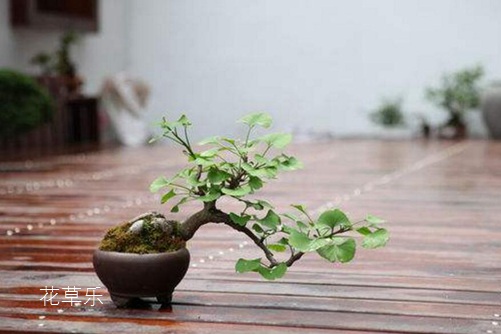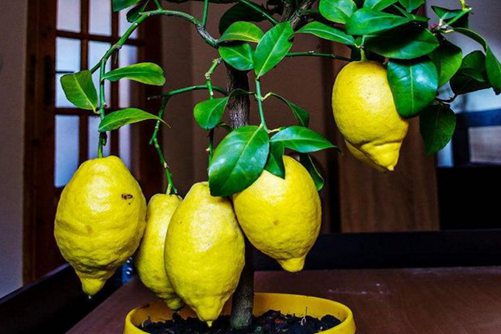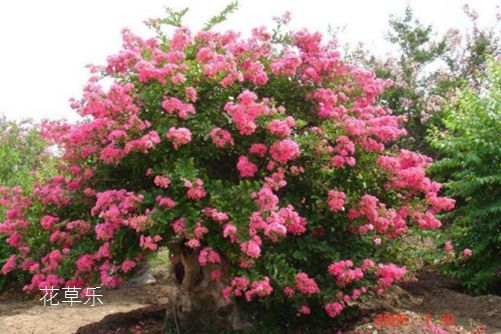How to raise potted ginkgo biloba? Introduction to potted planting and maintenance methods of Ginkgo biloba
Ginkgo trees are ancient and elegant, with fan-shaped leaves, green new leaves in spring and golden old leaves in autumn. It is an ancient and unique valuable tree species in China. Wen Zhenheng's Chronicles of long things in the Ming Dynasty recorded: "the branches and leaves of Ginkgo biloba are sparse, and they are the cutest when they are new green." The old pile and new leaves in the pot scion are the most ornamental. Ginkgo biloba has the advantages of slow growth, long life, strong resistance to pollution and toxic gases, and few diseases and insect pests. How to raise potted ginkgo biloba? Below, Hua Cao Le Xiaobian shares with you the potted planting and maintenance methods of ginkgo trees.
How to raise potted ginkgo biloba? Introduction to potted planting and maintenance methods of Ginkgo biloba

I. habits of ginkgo biloba
Like light, cold resistance, strong adaptability, drought resistance, not resistant to waterlogging, also have a certain resistance to air pollution, deep roots, slow growth, long life.
II. Key points of maintenance of Ginkgo biloba
1. Put it in a sunny, ventilated and moist place. Shade in summer to avoid sun exposure.
2. The soil in the basin is wet, watering in the morning and evening in summer and less watering after autumn. Be careful not to accumulate water too wet, it will cause root rot.
3. Use organic fertilizer as base fertilizer in winter, such as hoof crumbs, rotten bean cake or barnyard manure, etc. During the growing season, thin cake manure water or cooked human feces are often used for topdressing.
4. Turning the basin once every two years, around March.
5, diseases and insect pests need to control shell insects and copper green beetles, after the emergence of 40% omethoate diluted spray.
Matters needing attention in the maintenance of Ginkgo biloba
1. Potted Ginkgo biloba likes light, but it can not be placed in a place where the sun is shining for a long time. It is necessary to choose a place where there is a shortage of sunlight and where it is ventilated and humid. Winter only needs to receive sunlight properly. Although ginkgo trees are resistant to cold, good protective measures should be taken in winter.
2. Ginkgo trees like wet soil, but they can't accumulate water.
3. Ginkgo trees enter the growth period in spring and summer, and need to be supplemented with fertilizers. Animal manure, such as chicken manure, can make the leaves green.
4. Potted ginkgo trees are generally turned once every two years, usually around March. Trim the short and developed roots in the turning basin, replace 1/3 of the old soil, and put in the base fertilizer, which is beneficial to the growth of ginkgo biloba.
Fourth, the efficacy and function of ginkgo fruit
The fruity taste of ginkgo biloba is sweet, bitter and astringent, flat and poisonous. it has the function of collecting lung qi, relieving asthma and coughing, stopping turbidity and reducing stool. It can treat asthma, phlegm cough, leucorrhea, white turbid, spermatorrhea, gonorrhea, urination frequency and other diseases.
Summary
this ginkgo leaf is golden yellow, only the edge of the leaf is only a little brown; ginkgo biloba leaves are like a fan, the veins are not very clear, ginkgo biloba leaves are very soft and smooth, like a golden silk, smelling with a faint fragrance. Do you really want to raise a pot of ginkgo biloba?
Time: 2019-04-23 Click:
- Prev

How to grow potted lemons? make these points to make your potted lemons hang fruit all over the branches.
Lemon is also known as lemon, foreign lemon, motherfruit and so on. Small trees, with fewer thorns on branches. The lemon fruit is oval and yellow, and the juice is very sour. The flowering period of lemon is from April to May and the ripening period of fruit is from September to November. Because the taste of lemon is very sour, pregnant women like to eat it very much, which is called motherwort. Lemon juice is succulent and crispy
- Next

How can crape myrtle blossom for a hundred days? It can be done by using the method of round pruning.
The common name of crape myrtle is Baizhihong, with beautiful trees, gorgeous flowers and colors, and can bloom for more than a hundred days. In order to make potted crape myrtle have many flowers, colorful flowers and bloom many times, in addition to selecting dwarfing varieties, what other maintenance and management measures can make crape myrtle increase the number of blossoms, prolong the flowering time, and improve the effect of flower appreciation?
Related
- Fuxing push coffee new agricultural production and marketing class: lack of small-scale processing plants
- Jujube rice field leisure farm deep ploughing Yilan for five years to create a space for organic food and play
- Nongyu Farm-A trial of organic papaya for brave women with advanced technology
- Four points for attention in the prevention and control of diseases and insect pests of edible fungi
- How to add nutrient solution to Edible Fungi
- Is there any good way to control edible fungus mites?
- Open Inoculation Technology of Edible Fungi
- Is there any clever way to use fertilizer for edible fungus in winter?
- What agents are used to kill the pathogens of edible fungi in the mushroom shed?
- Rapid drying of Edible Fungi

